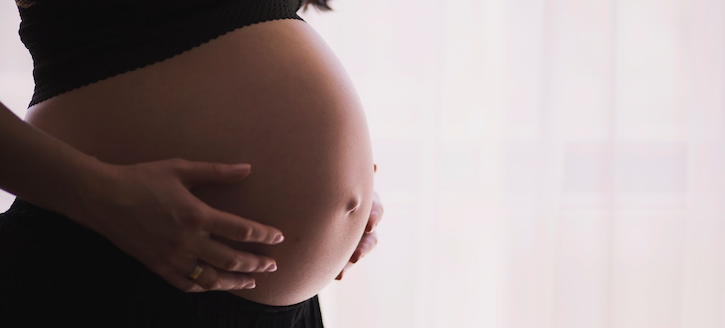Wearable Device Monitors Fetal Heartbeat, Could Reduce Stillbirths
The device would allow parents to hear their baby’s heartbeat continuously.

Expecting parents could soon have more peace of mind during pregnancy. A non-invasive device would allow parents to hear their baby’s heartbeat continuously at home.
The proof of concept device, developed by researchers at Stevens Institute of Technology, has the potential to reduce an estimated 2.6 million stillbirths worldwide per year, the research team claims.
“Almost a third of stillbirths occur in the absence of complicating factors,” said research lead Negar Tavassolian, Ph.D., associate professor at Stevens Institute of Technology. “Our device could let a pregnant woman know if her fetus is compromised and she needs to go to the doctor.”
The device uses the same commercial sensors used in smartphones and can record vibrations sent through a mother’s abdomen when her baby’s heart beats or the fetus moves.
Three wearable sensors are attached to the abdominal wall with elastic straps. One is placed at the center of the upper wall and the remaining two are attached on the lower part of the wall at symmetric locations.
Researchers tested the sensors on 10 pregnant women and found the device detected fetal heartrate with similar accuracy as fetal cardiotocograms — a standard wearable technology for fetal monitoring. Fetal cardiotocograms measure the baby’s heart electrical activity with the mother’s uterine contractions.
The experiment consisted of three steps, according to the researchers. First, the subjects needed to stay in a supine position for five minutes. Then the women changed to a seated position for the monitoring to continue for another five minutes. Finally, the women stood up to be monitored for an additional five minutes.
Researchers combined signals from three different sensors and used an algorithm to isolate the fetal heartbeat. The research team did this because measuring the fetal heartbeat with chest vibrations is more difficult than tracking an adult’s heartbeat. That’s because the faint vibrations of the fetus’s small heart get muffled by the movements of the host.
The research team found the supine position reported the highest accuracy and reliability. The average root mean square error (RMSE) for this position was 9.83 beats per minute, which had an average positive percent agreement of 84.44% for the seismo-cardiogram signal. Overall, the results of RMSE were 11.40 beats per minute from the seismo-cardiogram signal and 12.08 beats per minute from the gyro-cardiogram signal.
The monitor is more advantageous than existing electrocardiogram-based tools or Doppler ultrasound technology, the authors suggest. Those tools require specialized knowledge to use and can be expensive and bulky.
One monitor currently on the market weighs more than 11 pounds and has a four-hour battery life. The researchers claim their sensors are “barely a fifth-of-an-inch long, weigh next to nothing and can run off a three-volt battery for more than 24 hours.”
And unlike other monitors that can heat tissue if used continuously for long periods, Tavassolian said the monitors her team developed are completely passive and just detect existing vibration — posing no risk to the fetus.
“With further development, the proposed method could show promising potential for the continuous examination of fetus well-being and prevention of stillbirth,” the authors concluded.
The ultimate goal, though, is for the researchers to fuse different modalities — including measurement of fetal movement — into a single device, said first author Chenxi Yang, a Ph.D. student and Master of Engineering at Stevens Institute of Technology.
Get the best insights in digital health directly to your inbox.
Related
New Fertility Tracker Links Physiological Data Points with Algorithm
Apple Introduces mHealth App for Women to Track Menstrual Cycles, Fertility
Podcast: Adoption of Healthcare Tech in the Age of COVID-19 with Dr Kaveh Safavi
June 22nd 2021Kaveh Safavi, MD, JD, global health lead of Accenture Health, discusses how the pandemic influenced the speed at which healthcare organizations adopted new technologies and how this adoption is impacting patient care.